Through May 11
Free
Museum of the Everglades
Details here
I thought I was going to see some art.
I received the announcement for an opening reception on Friday, January 26 for the exhibition We Are Still Here, The Continuing Story of the Miccosukee Tribe at one of the five free Collier County Museums a few hours south of Tampa Bay – Museum of the Everglades in Everglades City.
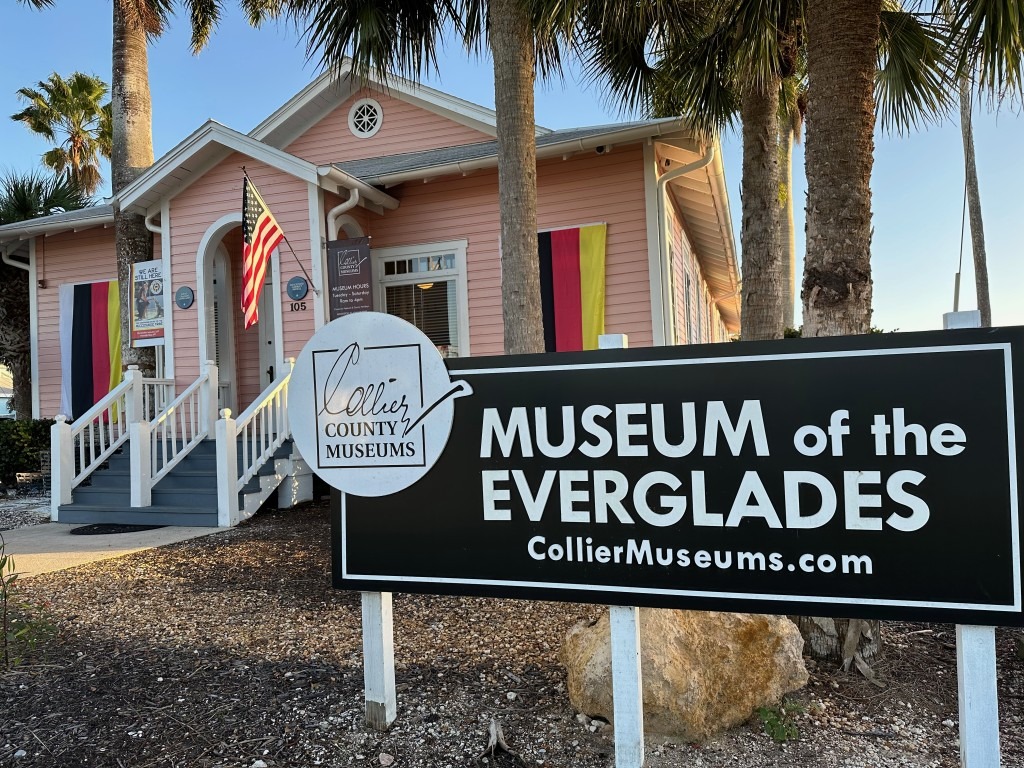
This brought to mind another exhibition, Reclaiming Home: Contemporary Seminole Art which showcased over 100 artworks by Seminole, Miccosukee and mixed-heritage artists at Sarasota’s Ringling Museum of Art last summer. So I was eager to see how the Miccosukee would be presented in a museum in the middle of the Everglades.
A friend from Naples who knows the area drove me there. On the way, she made couple of extra stops. First at the Smallwood’s Store Museum on the western edge of Chokoloskee Island, which is on the western edge of the Everglades.
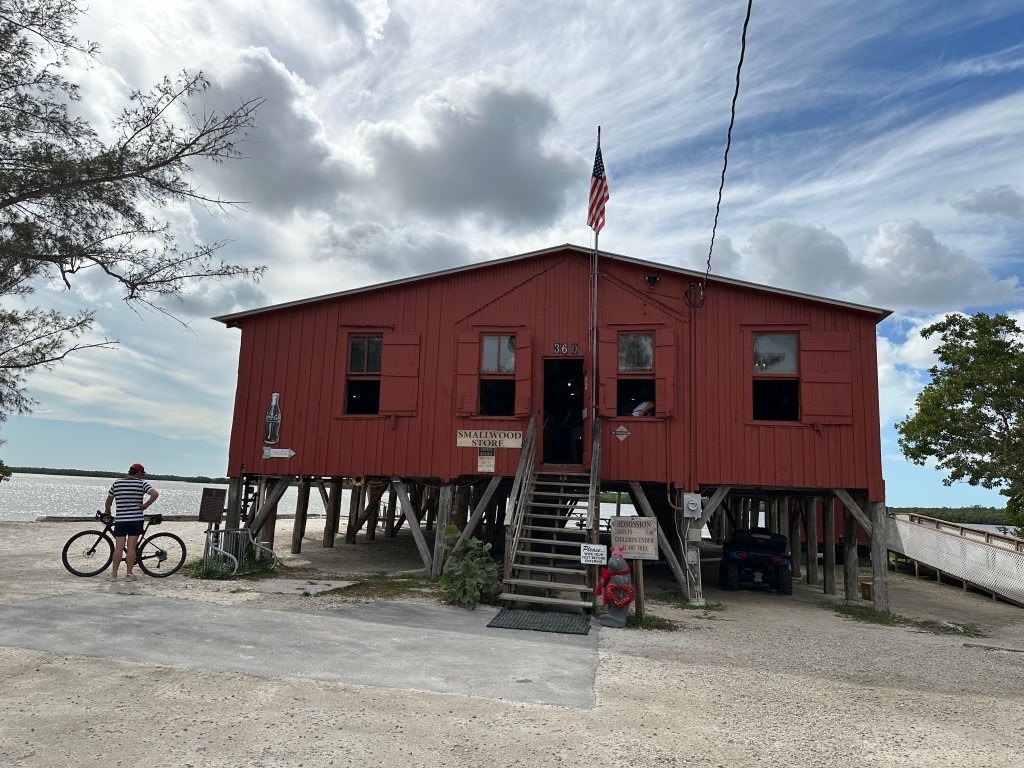
This building on stilts was once a store, post office and trading post serving early settlers and Seminoles. It was placed on the National Register of Historic Places in 1974, and restored as a museum in 1990.
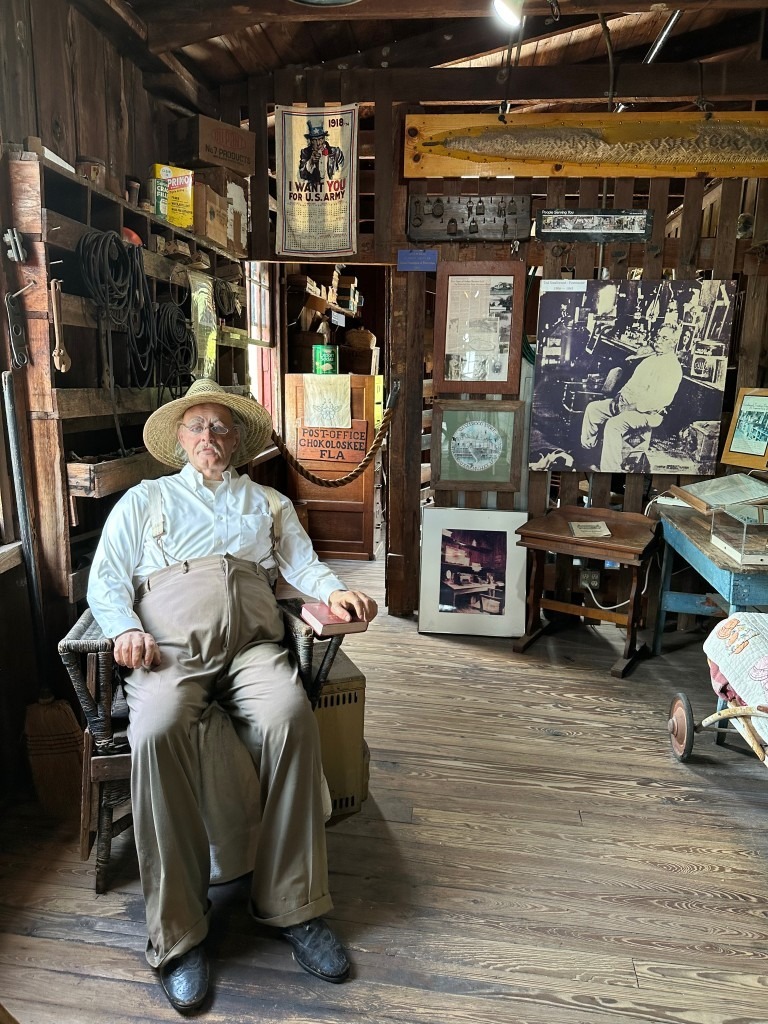
A full-size likeness of C.S. “Ted” Smallwood, a sculpture à la Duane Hanson, presides from one side of the store Smallwood built in 1906.
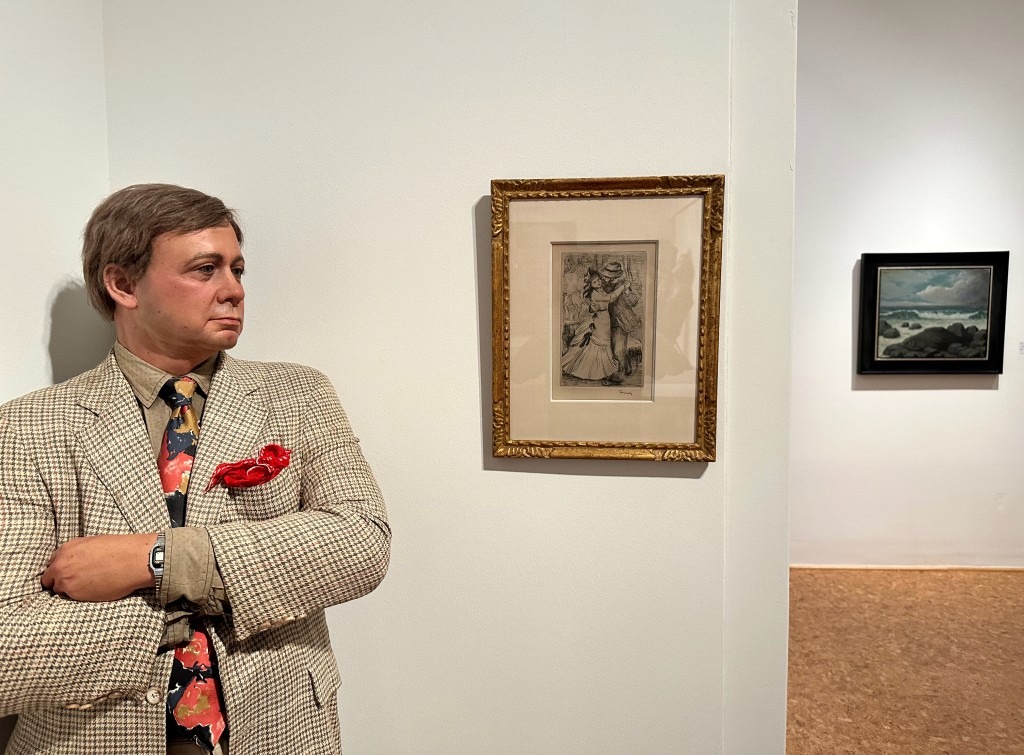
The balcony at the back of the building provides an expansive view that must have delighted him with never-ending amazing sunsets.
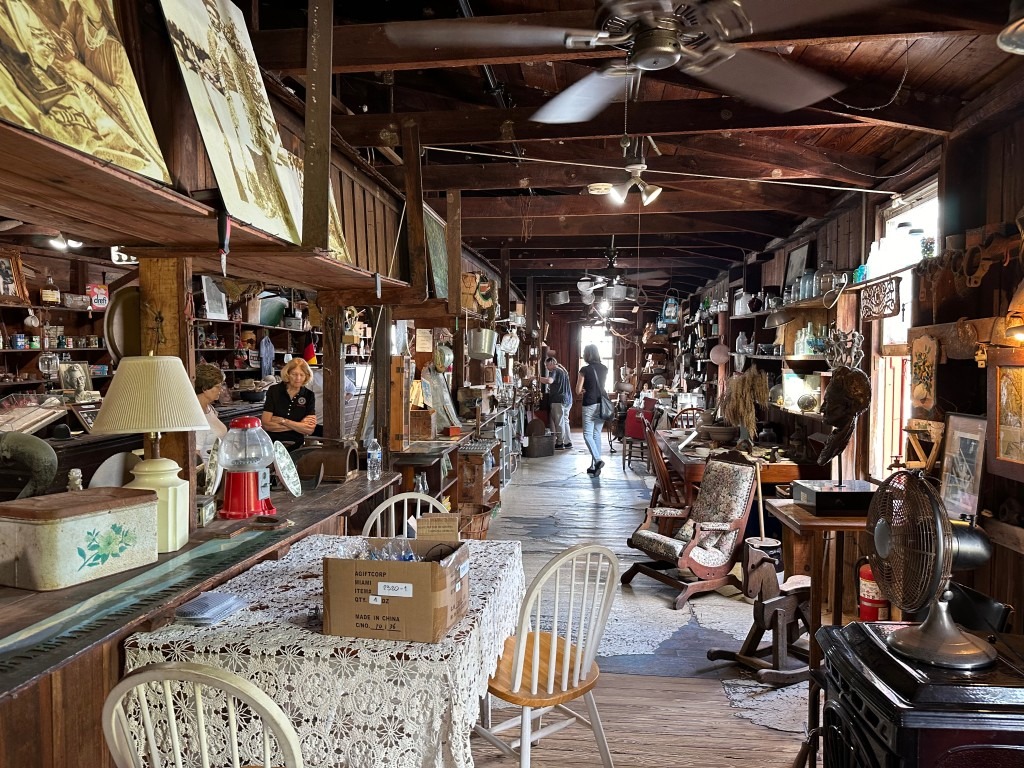
Second stop was at the Ochopee Post Office, a living museum with its own Florida historical marker. Seemingly in the middle of nowhere, this post office is like the art installation Prada Marfa by Berlin-based artists Elmgreen & Dragset.
This store-sculpture is permanently installed along a stretch of U.S. Route 90 outside Marfa, Texas that is also in the middle of nowhere.
Formerly an irrigation pipe shed that was pressed into service when the actual post office and general store burned down in 1953, it has been in continuous use since.
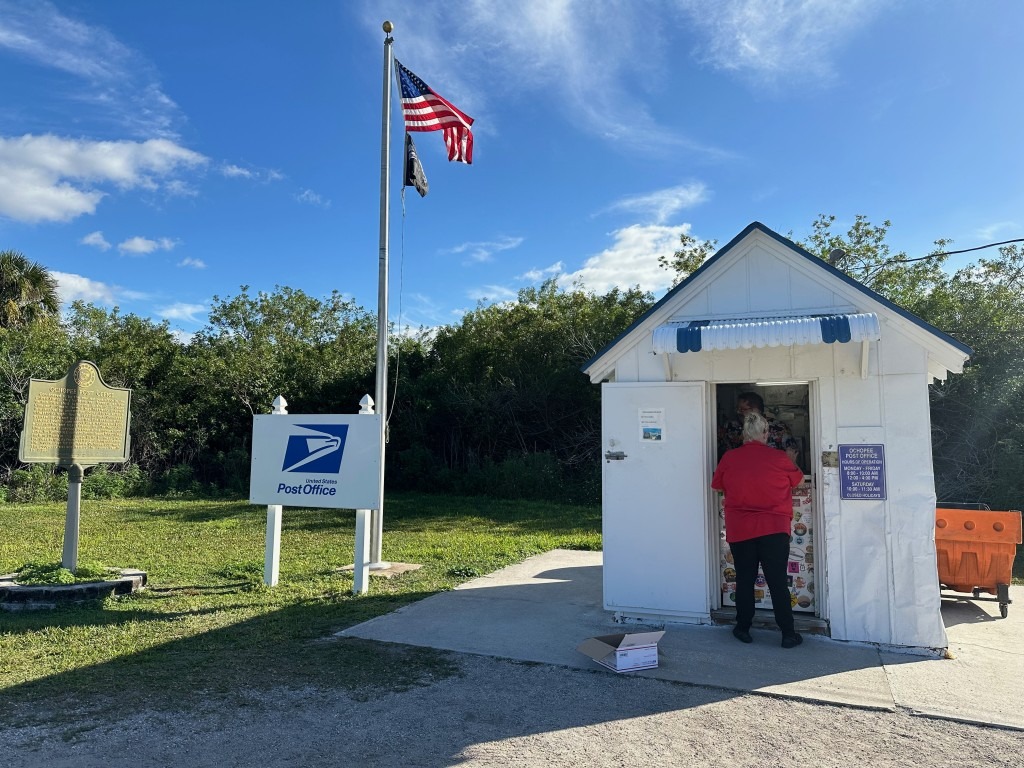
Known as the smallest post office in United States, among regular post office duties, they sell postcards of their post office shed, including stamp, that can be sent anywhere in the world, stamped with their famous Ochopee postmark. I sent one to a snowbird friend in Michigan.

Museum of the Everglades is a historic building in Everglades City, originally a laundry facility that became Everglades Women’s Club. Founded in 1928, the Women’s Club purchased the building for use as a clubhouse in 1965, which now also serves as a historical museum.

One of the displays there documents the Christian missionaries’ efforts to convert the Seminoles from their own spiritual practices.

Interestingly, this is a similar pattern of conversion western missionaries have carried out on indigenous peoples around the world.
In Australia, works by aboriginal artist Richard Bell address this issue with two particular paintings – Bible for Dummies and Who Made God Savage.
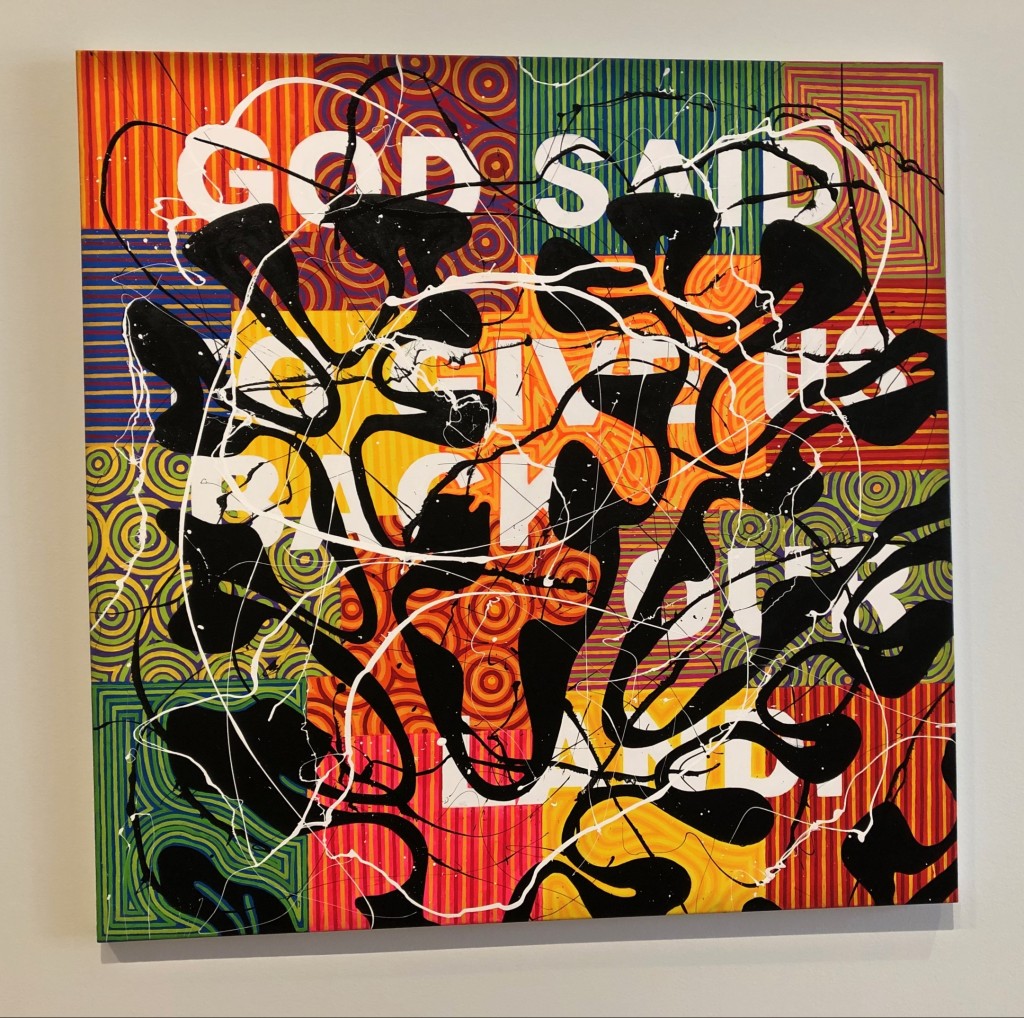
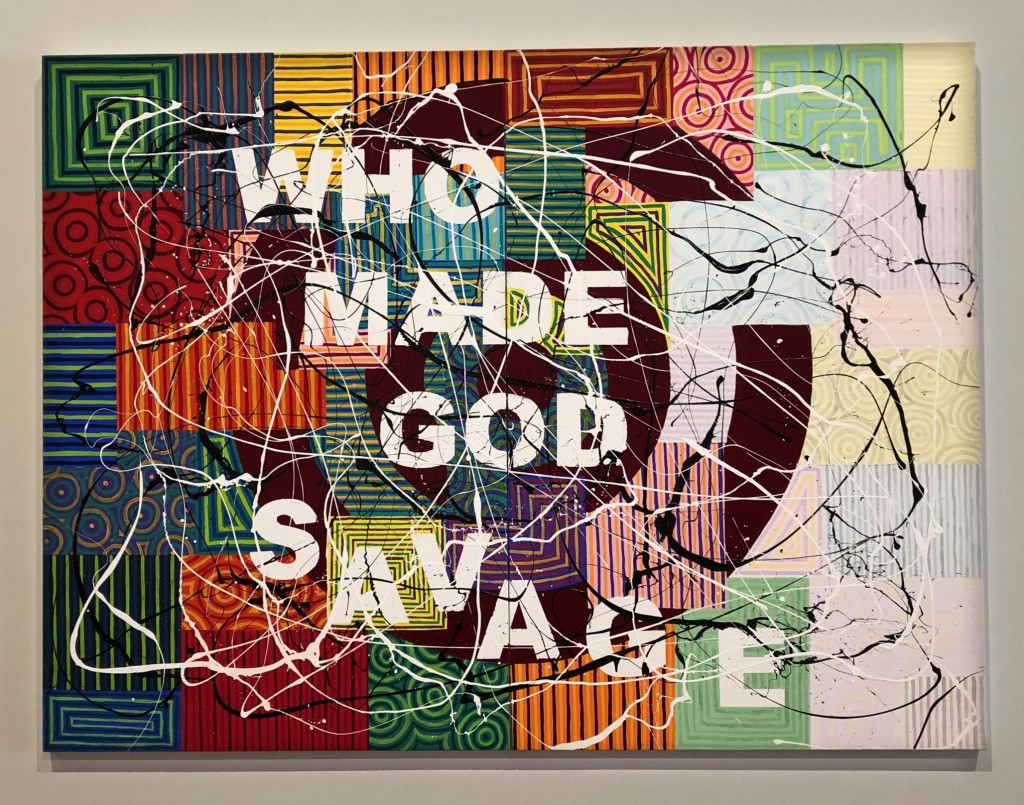
Bell said of the paintings. . . Western religion is inescapable for indigenous people around the world. That’s the fact. And it is, and was, played out in almost every colonized country and it’s been disastrous. Those residential schools in North America that were run by the Church, disastrous. Here is Australia, we have the stolen generations and the Church took a front-row seat to that. Colonialism and the Church go hand-in-hand.
The exhibition, We Are Still Here – The Continuing Story of the Miccosukee Tribe took up the front gallery of the museum.

There was no art. I had misunderstood how the exhibition story would be told.
While a bit disappointed, the exhibition as it is delivers great stories and history lessons. Curating in some visual art would have enhanced the whole presentation. It is like adding a pinch of salt to food.
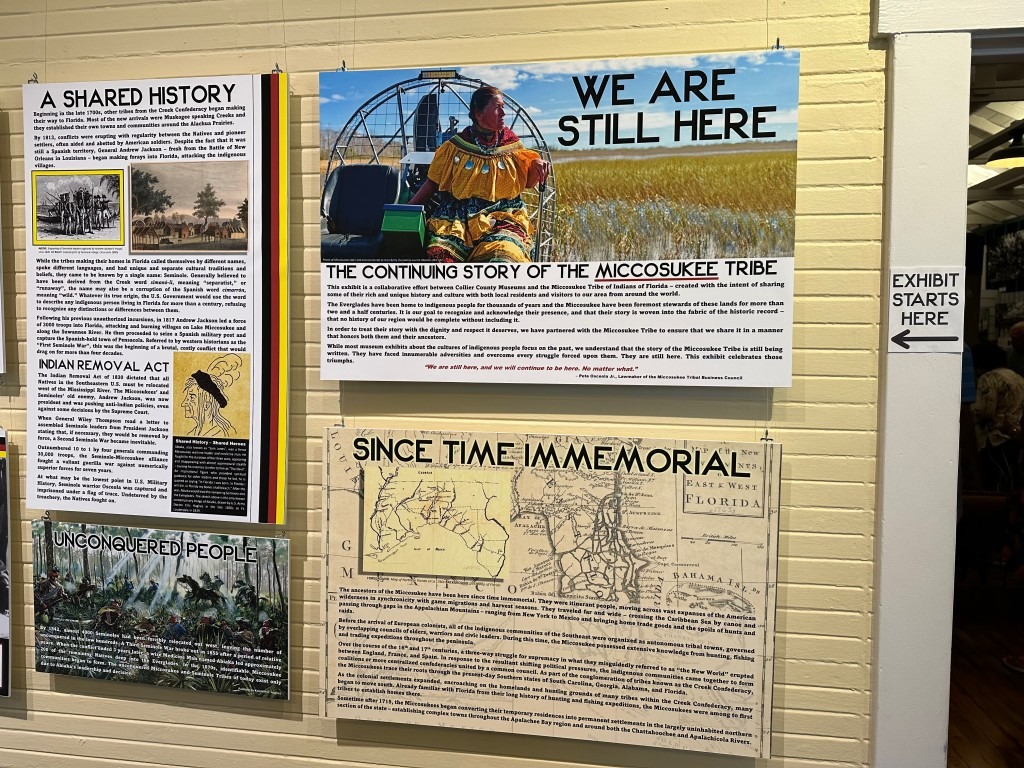
The exhibition consists of panels – a storyboard format – each covering an aspect of the Miccosukee people’s long struggles, survivals, and thriving against all odds.

From the first didactic panel. . . While most museum exhibits about the cultures of indigenous people focus on the past, we understand that the story of the Miccosukee Tribe is still being written. They have faced innumerable adversities and overcome every struggle forced upon them.
They are still here. This exhibit celebrates those triumphs.

Who knew of their connection with Fidel Castro, or the total imbalance of power against the overwhelming U.S. Army? Or that there’s a resolution called “Indian Termination Act” enacted by the U.S. government resulting in selling off their land without compensation?
Or that the famed Tamiami Trail cutting through the Everglades, considered an engineering feat, broke up Miccosukee animal hunting and migration routes, throwing off the sensitive balance of Everglades water ecosystems? In a similar manner I-275 cut through Black neighborhoods in St. Petersburg, and broke up prosperous commerce and communities.
Or that the Miccosukee’s stewardship of the Everglades often comes in conflict with the Army Corp of Engineers, South Florida Water Management District, developers, recreational weekenders, and a host of others who seek their land without understanding the whole picture and the ramifications of their actions – or if they understand, do not care.
They say history is written by the victors, but they forgot about the survivors.

The opening was very well attended. The Everglades Women’s Club can really do museum openings. They prepared a full buffet which included this fantastic platter of traditional Miccosukee fry bread.
That almost makes up for no artworks.
colliermuseums.com/locations/museum-of-the-everglades






